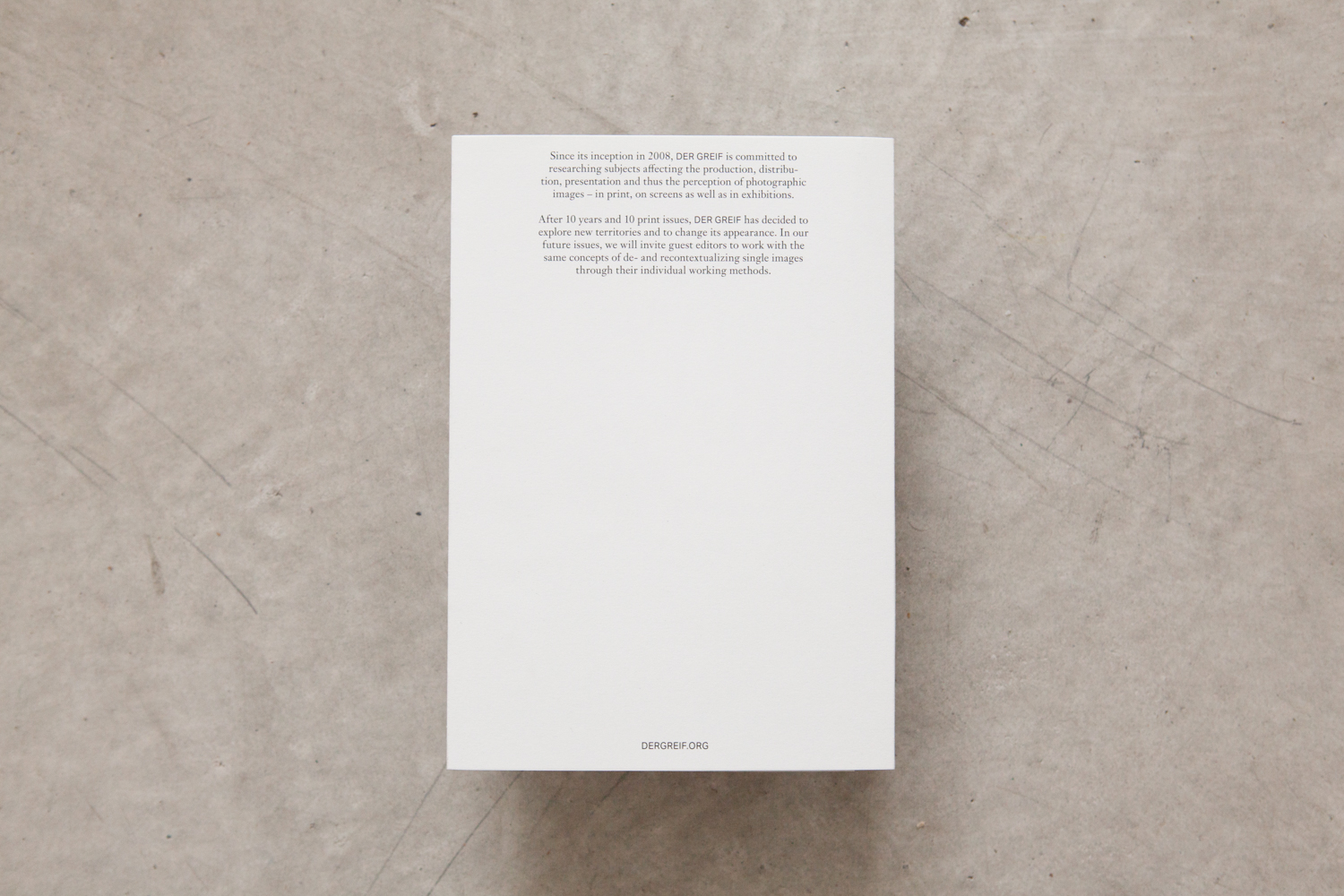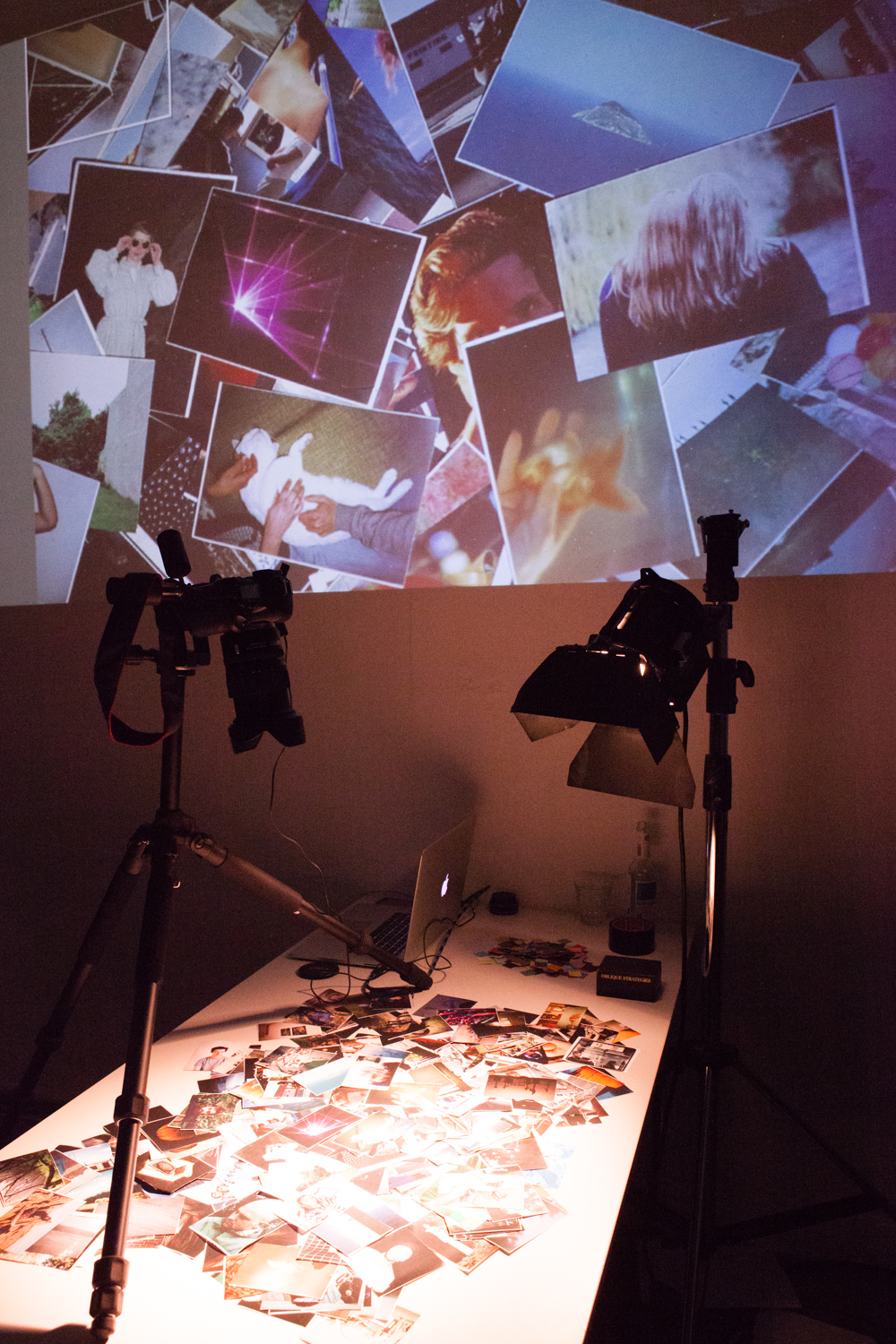Specials
Specials is a virtual space dedicated to writing on photography, showcasing unique content, projects and announcements.
Special Feature: Jason Fulford as guest editor for DER GREIF #11
Sep 17, 2018 - Gita Cooper-van Ingen
After 10 years of Der Greif magazine, we’ve decided to change the working process by inviting guest editors to work with us to create the forthcoming new issues, which appear annually. The following interview with our recent guest editor, Jason Fulford, focusses on aspects of the production of issues 11, which we did over at Longo in Bolzano. Read the interview to find out about how the latest issue was made.
The new format gives us a sense both of a diary and a novel, can you describe this decision?
One rule of thumb is that content should dictate form. The content of this issue ended up as a narrative. It was more like a book than a magazine, and meant to be read in order, from front to back, so I designed it to be smaller than previous issues of Der Greif. The smaller size is easier to read—you can carry it in your bag and read it on the subway.
What was particularly exciting for you in guest editing the new issue?
I love to look at pictures, so I asked to see as many as possible. Der Greif gave me access to over 40,000 past submissions. I spent a month looking through them and selecting my favorites—pictures I wished I had taken. That selection was eventually whittled down to the 68 final images in the book. I printed out my initial selection of about 450 pictures, and spread them out around my apartment. As I found connections between pictures, I separated them out onto sheets of white paper. Those combinations eventually became the spreads in the issue. Honestly, each part of the process was fun for me—first discovering images, then humor and meaning through association, adding text, tightening up the design, going on press, and organizing a variety show in Munich to launch the issue.
Can you talk about some of the other shifts, such as your choice of excerpts from Mary Shelley’s Frankenstein, the first time there’s been the use of a single literary work as opposed to open submissions, as had been the case in past issues, could you speak about your choice for a singular voice for the text?
I arranged the selection of images first—pictures from 67 photographers. There’s a spirit or a sensibility that ties the images together, and it felt like it could be the work of one person. I was reading Frankenstein at the time, and on a whim, inserted a few excerpts into the edit. The connections between text and image were uncanny, so I kept going. To add another meta layer, the excerpts from Frankenstein come from three different characters—the narrator, Dr. Frankenstein, and the monster—but they’re all written in the first person, so they also blend into one voice. Finally the whole Der Greif issue becomes a “Frankenstein” creation.
Did you draw any conclusions from the process of working on this issue about a sort of collective authorship, is this something you were consciously thinking about whilst making your sequence?
Der Greif is a great platform for experiments in collective authorship. I still believe in the independence of authors, but even that notion is complicated, especially with photography. For example, I take pictures while I wander around. I don’t set things up, I just observe. So my photographs rely on all the anonymous people who made the built environment look the way it does. And those people all had their own influences—things they were copying and creating. But, to paraphrase Henri Cartier-Bresson, a point of view is more interesting than a fact. And a good author has a unique point of view.
Can you maybe describe some of the production process, you were present at the printers, Longo, what was your main objective for the final edition?
All of the production decisions were made with intent—again content dictating form. For example, and this is going to get nerdy, we used a square spine, rather than the staple-bound spines from previous issues. That makes it feel more like a book than a magazine. The inside paper is uncoated, which makes the book lighter and also feels good to touch. We printed with UV inks, which keep the richness and contrast of the images by not soaking into the uncoated paper. The jacket is a reference to the previous Der Greif design, so people would recognize it. The “hidden” green cover is inspired by an old notebook from my library, and is a nod to the experimental quality of the project. I chose a textured paper for the green cover that feels like something you would find in an old bookstore. When we were on press, the printer mentioned that we could add color pigment to the glue on the spine, so we made it red, to match the red on the hidden cover.
DER GREIF ISSUE 11
21 x 15 cm
Edition of 4,000, each copy is numbered.
96 pages with 69 photographs
weight: Offset UV print colored 180º open binding additional book jacket
paper inside: Munken Gautama 200g/qm
dust jacket: Munken Print white 1.5 150g/qm
language: English
Jason Fulford is a photographer and co-founder of J&L Books. He is a Guggenheim Fellow and a frequent lecturer at universities. His monographs include Crushed, Raising Frogs for $$$, and The Mushroom Collector. He is co-author with Tamara Shopsin of the photobook for children, This Equals That, and co-editor with Gregory Halpern of The Photographer’s Playbook.
Longo is a leading corporate communication and analogue & digital media provider in the “heart of Europe”, based in Bolzano & Augsburg. Innovative technology, professional skills and a passionate commitment make us the partner of choice to our customers. Common ideas and specific solutions emerge are the result of dialogue.

















